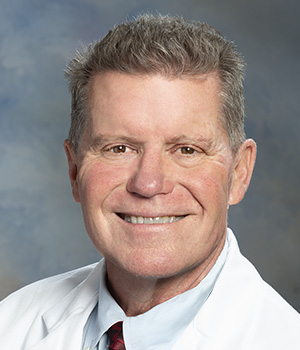Treating Cancerous Tumors with Open Heart Surgery
Bill Zipf felt like he had the flu, he was so achy and weak. And winded—he could barely get a breath. But it was worse than flu.
His doctor told him he had congestive heart failure. How could that be? Zipf had spent years working outdoors as a rancher. He was in good physical shape. The heart failure was symptomatic of something even worse: Zipf was diagnosed with cancer. The growth was on the upper chamber of his heart.
“It was a jaw-dropper,” said the soft-spoken Zipf, 53. “Even the doctors were surprised when it came back cancer.”
So in March 2008, Zipf had an open-heart operation to remove the tumor at a hospital near his home in Mount Vernon, Mo. He went through chemotherapy and hoped that would be the end of it.
And yet...
“I always had it in the back of my mind that the tumor would come back,” said Zipf.
It did—almost two years later to the day: the same symptoms in the same place.
Less than a month left
This time, Zipf’s cardiologist called hospitals to see whether they could perform the kind of radical surgery Zipf seemed to need. All but one said no. Saint Luke’s said yes—even though the deck was stacked against Zipf.
“Primary cancers of the heart, which is what Bill had, are very rare,” said Keith Allen, M.D., director of Cardiothoracic Surgical Research at Saint Luke’s. “There’s a common small cardiac tumor called a myxoma, which is what Bill had been treated for initially. But it turned out he had something much more serious, a sarcoma.”
A sarcoma is a type of cancer that arises from bone, muscle or other blood vessels. It’s often highly malignant—a deadly kind of cancer to have. Zipf’s tumor was the size of a softball and now involved both the upper and lower chambers of his heart. It was growing into his right lung. The tumor had become so large that it was blocking the blood traveling through his heart via the mitral valve, causing severe shortness of breath.
Had he not been treated at Saint Luke’s when he was, Dr. Allen believes, Zipf would have been dead within the month.
“I was taking care of business and pretty much preparing for the end,” Zipf said. “I wasn’t expecting much, but as soon as I got to Saint Luke’s, everything was laid out for me. The staff was ready for me. They had a plan.”
Zipf went to Saint Luke’s on Wednesday for tests. By Thursday evening, Dr. Allen told him they were ready to do the procedure the next morning. Zipf was amazed the doctors could treat him so quickly. He was ready, too.
Rebuilding a heart
With a heart as damaged as Zipf’s, a transplant might seem to have been the answer. As Kansas City’s only hospital performing heart transplants, Saint Luke’s would be the ideal place. Doctors here have performed more than 475 heart transplants, and the number of patients who receive a new heart in less than six months is almost nine out of 10. (The national average is fewer than three out of 10.)
But even with Saint Luke’s rapid turnaround time, it was unlikely that Zipf could have a new heart implanted in time to save him. Besides, the immunosuppression drugs that transplant patients must take increase the chance for any cancer to recur.
An autotransplant, then? “Sometimes you can remove the entire heart, take it to the back table, cut the tumor out, reconstruct the heart, and then put the heart back into the patient,” explained Dr. Allen. But because of the way Zipf’s cancer had spread to his lung, his condition was too complicated for an autotransplant. Zipf’s surgery would end up being unique.
Cutting-edge 3-D
Dr. Allen and his team removed nearly three-quarters of Zipf’s left and right atriums and his entire right lung. Then the surgical team reconstructed the two upper chambers of Zipf’s heart, “patching” the atriums with a mixture of bovine tissue and the fabric Dacron. “We knew we had to be aggressive and be willing to cut out all the tumor,” said Dr. Allen. “Every time I had to cut more, I thought, ‘Am I going to be able to put things back together?’ It was like a complex puzzle. But all of us—the anesthesiologist, the ICU staff—had to be prepared to go the whole nine yards.”
What gave Saint Luke’s the edge, said Dr. Allen, was the large number of heart transplants the surgical teams perform.
“We’re very comfortable with cutting the heart out,” Dr. Allen said. “It allows us to think in 3-D and say, ‘I can cut this, remove that, add a patch and have a functioning heart again.’”
‘I’m still here’
When Zipf awoke from the six-hour surgery, he had a clear head and an overwhelming sense of relief. “My first thought was, ‘I’m still here.’ That was a great feeling,” said Zipf. Despite the severity of his situation, Zipf’s overall good health stood him in good stead.
“We can do a lot to help the human body if it hasn’t been ravaged by other medical problems,” said Dr. Allen.
Zipf plans to go back to work and, most of all, to ride horses again. He knows he won’t be as strong as he once was, but that’s OK.
“I can lift things better than before, and I can walk a fair distance,” he said. “The doctors are tickled at the progress I’ve made. They were great to take a chance on me.”
Related Content
